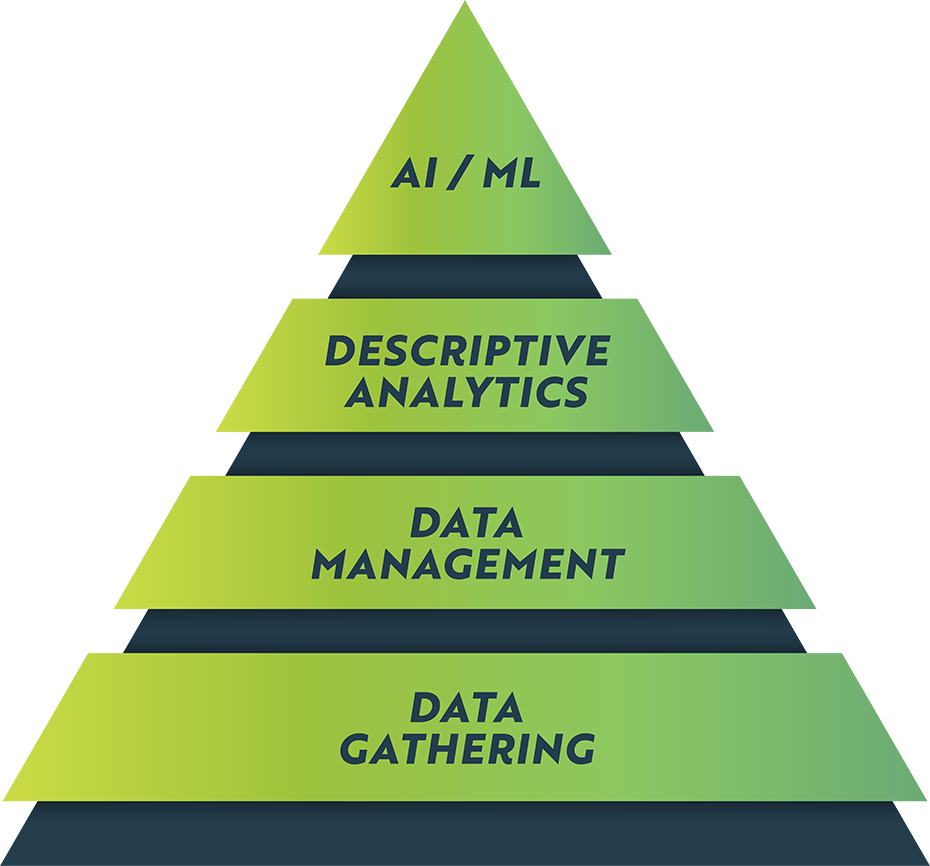We talked in this space before about The Data Pyramid, a way of thinking about how AI, ML, and other buzzy techniques rely on data quality to be effective.
I’ve found it to be an enormously useful metaphor when thinking about how to add value with data.

But companies don’t quite act like our Pyramid – they act like clusters of pyramids that interact and rely on each other. More like a Data City, where each discipline or workflow is its own Pyramid. These disciplines (Accounting, Land, Engineering, etc.) and workflows (choosing a frac design, procuring equipment, booking accruals) interact by sending information to each other, where the output of one workflow feeds the next.
What happens at many oil & gas companies is that some areas of the company end up moving further down the digitalization path than others. Some Data Pyramids are way taller than others, to extend our metaphor. This often comes down to the skills and interests of individual contributors – the engineer who writes Python code to automate decline curve analysis, or the GIS specialist who builds amazing maps with rich, multi-disciplinary data behind them.

Those tall, well-built Data Pyramids in specific workflows can act as shining examples. Success breeds success as data-oriented contributions are rewarded with status, money, and additional resources. Others in the organization see those rewards and want a piece of the action! Next thing you know, there are requests for additional software licenses and database access coming from all corners, with workflows increasingly automated and decisions rooted in well-understood data! Utopia!
But the inverse can happen too. Some disciplines are harder to transform by their nature, or the individuals involved don’t have the interest or aptitude.
Land is a common example of a challenging discipline to transform. John Witucki on our team wrote about this in more detail, but Land & Lease data is geospatially complex. It has messy relationships between data objects like wells, leases, tracts, and units. And much of the underlying “data” is buried in legal agreements signed decades ago (if not a century!). The ROI is still very strong, but improving Land workflows usually takes longer and requires more commitment from the team. It’s hard, but it’s worth it.
If your company has a Data Pyramid within a Discipline or Workflow that is proving difficult to build up, there are some strategies you should try to employ. Incentivize your people. Show your team examples of what *could be*, whether from an adjacent discipline or from another company. Stay positive and forward-looking, avoid blame and finger-pointing.
So how’s your Data City looking? Which Data Pyramids are tallest and strongest, i.e., which disciplines are bought in, and why? If there are workflows that have been ignored, thinking about what drove success in some areas but not all can help you in the next step on the journey.


